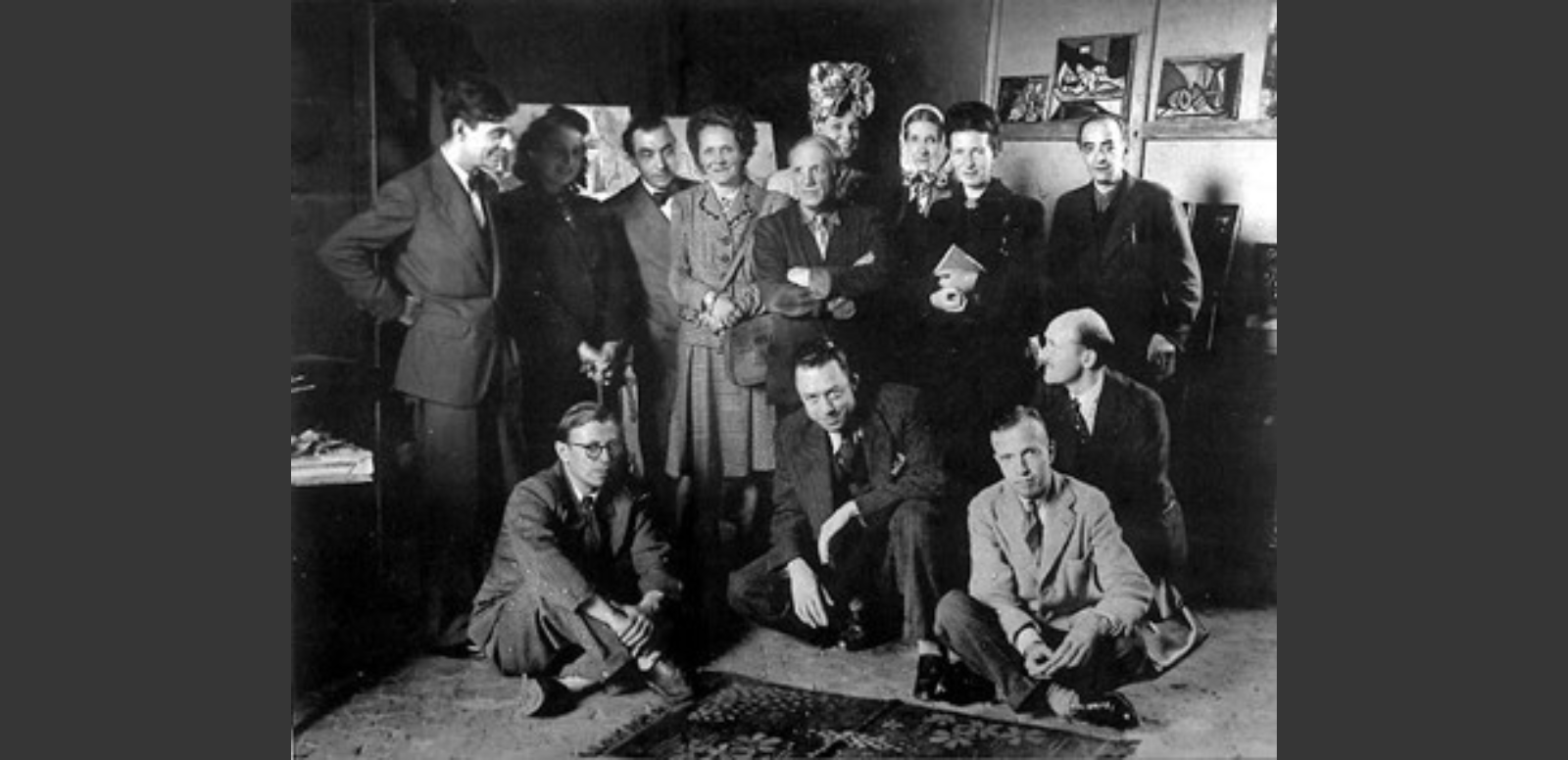
© Sucesión Picasso, VEGAP, Madrid, 2023
Pablo Picasso, recognized as one of the most influential artists of the 20th century, not only stood out for his pictorial talent, but also for his close relationship with important poets of his time. Through these friendships, Picasso found inspiration and collaborated on projects that fused poetry and the visual arts.
Max Jacob
Max Jacob, French writer and poet, was one of the first to befriend Picasso. Their relationship began in 1905, when they met in Paris and shared a passion for art and the avant-garde. Picasso encouraged Jacob to live as a poet, which led him to abandon his work and immerse himself in painting and writing. The friendship between the two grew stronger over time, and in 1915, Picasso was the godfather of Jacob's baptism, who converted to Catholicism. Sadly, Jacob was arrested in 1944 by the Gestapo, the political police of the Nazi state, and died in the concentration camp of Drancy (France). Despite his untimely departure, his legacy as a master of the poetic genre endures to this day.
André Salmon
André Salmon, French writer and art critic, frequented Parisian avant-garde circles from 1903. He established a close relationship with Paul Fort, another French poet, and with Picasso. Salmon was an early advocate of Cubism, as was Guillaume Apollinaire. He worked as a journalist for various media and played the role of correspondent during the Spanish Civil War. Salmon cultivated poetry, essays and narrative, and his work captured the convulsive reality of the modern world. His friendship with Picasso was consolidated through the exchange of ideas about artistic practice, the analytical decomposition of everyday elements and the exploration of serialism, fundamental characteristics of the pictorial and literary avant-gardes of the 20th century.
Guillaume Apollinaire
Guillaume Apollinaire, French poet, had a decisive influence on the formation of the avant-garde at the beginning of the 20th century. He frequented the artistic and literary circles of Paris, where he became notable. In addition, he worked as an art critic and theorized in defense of the new artistic trends, such as the cubism of his friends Picasso and Georges Braque, as well as the fauvism of Henri Matisse. Apollinaire wrote The Cubist Painters in 1913, which became the manifesto of Cubism.
The friendship between Apollinaire and Picasso influenced the painter's work, as the Malaga-born painter recognized, specifically in his interest in the world of the circus. The years of friendship coincided with the well-known pink period of Picasso, where, in addition to painting the famous harlequins, he also made works of Apollinaire in the form of caricature, where he appears as a bullfighter or artilleryman.
In 1911, both were accused of stealing the famous Mona Lisa from the Louvre Museum, although they were released shortly after. In November 1913, the painting appeared in the hands of a certain Vincenzo Peruggia, a former Louvre worker who had taken the painting to leave it in Italy.
Gertrude Stein
Gertrude Stein, American writer and poet, played an important role in the Paris art scene. She took up residence in the city in 1903 and it became a meeting place for writers such as Guillaume Apollinaire and Jean Cocteau, among others, and where she met avant-garde artists and painters such as Henri Matisse and Pablo Picasso, who painted a portrait of her in 1904.
Stein was an innovative figure in experimental poetry and challenged the literary conventions of the time. Her friendship with Picasso focused on exploring the constituent elements of their respective artistic practices, including the analytical decomposition of everyday life, language and painting.
September sees the opening of the exhibition Gertrude Stein and Picasso. The Invention of Language at the Museé de Luxembourg. The exhibition offers a detailed insight into Gertrude Stein's life in close proximity to the Musée du Luxemburg, which she used to frequent regularly, as well as her close friendship with Picasso and her connections to the Parisian art scene. The main focus is on the prominent years of the Demoiselles d'Avignon and the artistic movement of Cubism.
Jean Cocteau
Jean Cocteau, French novelist, playwright, poet, essayist and filmmaker, was a leading figure in the avant-garde movements of the early decades of the 20th century. After moving to Paris in the 1920s, he joined the city's artistic circle, where he established friendships with figures such as Picasso, Proust, Hemingway, Stravinsky and Tennessee Williams. Cocteau also developed a personal and artistic relationship with Sergey Diaghilev, founder of the Ballets Russes, and Coco Chanel. In 1917, Cocteau was part of the creative team for Parade, a ballet in which Picasso designed the scenery and Chanel was in charge of the costumes. The friendship between the two was strengthened when Cocteau served as a witness at Picasso's marriage to Olga Khokhlova in 1918.
Moreover, the collaboration between the two continued with the play Le Train Bleu in 1924, which featured Cocteau's set design and a backdrop on which Picasso's Deux femmes courant sur la plage was painted. The piece was presented in October at the Museo Nacional Thyssen-Bornemisza, as part of the exhibition entitled Picasso / Chanel. This exhibition covered the relationship that existed between Pablo Picasso and Gabrielle Chanel, as well as their joint collaboration on two memorable occasions, the creation of Antigona with the participation of Jean Cocteau, and the other for the famous Russian ballet Le Train Bleu.
Paul Éluard
Paul Éluard, a French poet known for his surrealist work, was Picasso's best friend from 1935. Both took sides with the Republican government during the Spanish Civil War. Éluard inspired Picasso with his poem Novembre (1936), which led the painter to create the etchings Franco's Dream and Lie. Éluard also introduced Picasso to Dora Maar, who documented the process of creating the famous work Guernica.
Eluard and Picasso spent three consecutive summers with their partners and other friends in Mogins, France. Picasso portrayed Éluard's wife Nusch on numerous occasions, making her one of the women most often portrayed by the painter, even though she was not his romantic partner.

